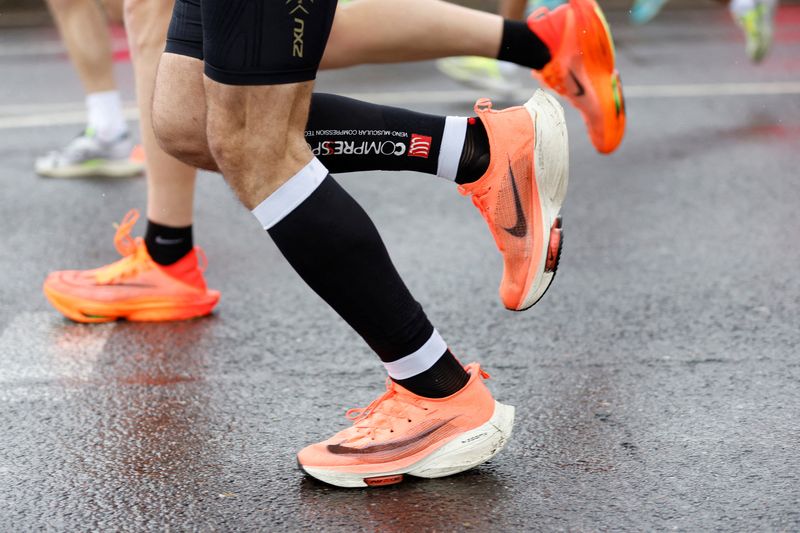By Helen Reid
PARIS (Reuters) -Nike unveiled Olympic kits for the teams it sponsors on Thursday alongside athletes including Kenyan marathon star Eliud Kipchoge and British sprinter Dina Asher-Smith, betting that top athletes can help it win more everyday consumers.
After a long stretch of lacklustre sales, this summer's Olympic Games in Paris offer a fresh chance for Nike (NYSE:NKE), to direct the world's attention to its performance products like the Alphafly 3 marathon shoe which retails at $285.
As well as outfitting U.S. athletes across all sports, Nike will provide kit for the athletics teams of Canada, China, Kenya, Germany, and Uganda at the Olympics, basketball for China, France, Japan, and Spain, and athletes in breaking - a new breakdancing event at the Paris Games - for Korea.
The high-end shoes Nike will spotlight at the Olympics serve a relatively limited audience but the broader goal for Nike is to sell more entry-level and mid-range running shoes, and on Thursday it highlighted its Pegasus shoe range which retails at between $130 and $160.
Nike spotlighted its "Air" cushioning technology, used in everything from marathon shoes to sneakers, and its knit materials that make shoes lighter.
"What we learn from our best athletes, 10% of the athletes we work with, there is a trickledown in innovation because we're focused on making sure our innovations work across body shapes and running speeds and styles," Matt Nurse, vice president of Nike's sport innovation lab, told Reuters in an interview.
Brands like On Running, Hoka, and Lululemon (NASDAQ:LULU) are taking market share from Nike, while a trend away from chunky basketball sneakers and towards low-profile "terrace" shoes like the Adidas (OTC:ADDYY) Samba is also hurting the sportswear giant.
"There's definitely more competition... it's good to take the pulse on what consumers are thinking and responding to - I just think competition always makes us better," said Nurse.
Nike warned three weeks ago that its revenue in the first half of its 2025 financial year would shrink and said it would cut back on orders of established shoes such as the Air Force 1 as it tries to focus on new, innovative products.
While Nike, with annual revenue of $51.2 billion in the year to May 31, 2023, is much bigger than Adidas and Lululemon, analysts at HSBC expect its annual sales growth to lag those brands in 2024, 2025 and 2026.

"They haven't had a ton of exciting product innovation recently," said Tom Nikic, analyst at Wedbush in New York.
Seeing Olympians break records in Nike gear could help push more shoppers to the brand. "It will remain to be seen whether Nike has the strong product to capitalise on the attention it will get," said Nikic.